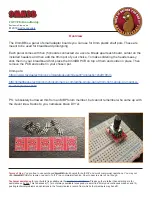
10. Measuring operations
Setting to zero automatically deletes the maximum and minimum val-
ues for this channel. The MAX, MIN, and MEM functions are thus
also available for relative measuring.
10.6 Sensor adjustment
Many types of sensor need to be adjusted either once or at regular intervals to
compensate for various instabilities.
With
dynamic pressure probes
(ranges L840 and L890, units Pa) the zero-
point must be temporarily adjusted by repeatedly pressing
PROG
,
►
, i.e.
until switching off, even if the channel is locked.
With the following chemical probes automatic
two-point adjustment
can be
performed :
Probe
Type
Zero-
point
Gain
pH probe
ZA 9610-AKY
7.00
4.00
10.00
pH
or
pH
Conductivity
FY A641-LF
0.0
2.77 mS/cm
FY A641-LF2
0.0
147.0 uS/cm
FY A641-LF3
0.0
111.8 mS/cm
O
2
saturation
FY A640-O2
0
101 %
1. Zero-point adjustment
To perform zero-point adjustment the measured value must first be physic-
ally set to zero. i.e.
● Immerse pH probe in a buffer solution, pH 7.0.
● Withdraw conductivity probe from the liquid and dry it.
● Hold the O
2
probe for water in a zero solution.
Zero-point adjustment is performed in several steps.
To start the adjustment procedure press
PROG
If the sensor is locked, an abbreviation ap-
pears with the locking mode e.g. ´
VM5
´ and
the symbol
FREE
flashes. To temporarily
unlock the sensor for the purpose of ad-
justment, this must either be confirmed by
pressing key
►
(OK) or canceled by
pressing key
◄
(ESC).
As soon as it has been confirmed the set-
point value flashes in the display with the correction symbol.
The adjustment itself must now either be confirmed once again by pressing
key
►
(OK) or canceled by pressing key
◄
(ESC).
28 ALMEMO 2470
















































